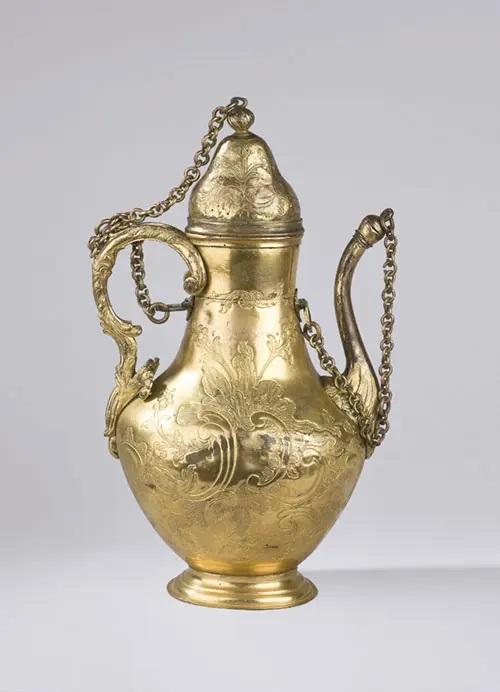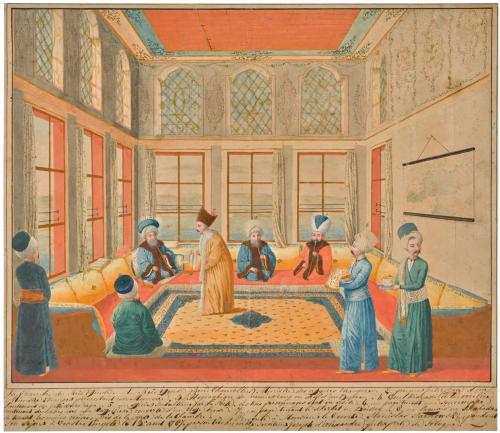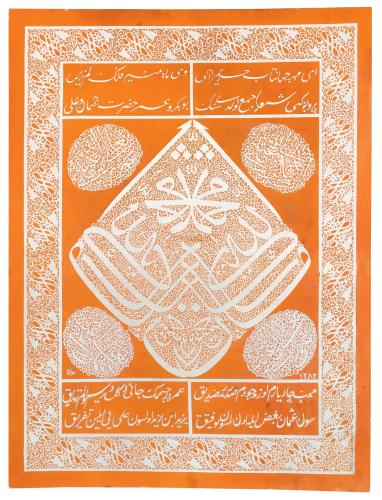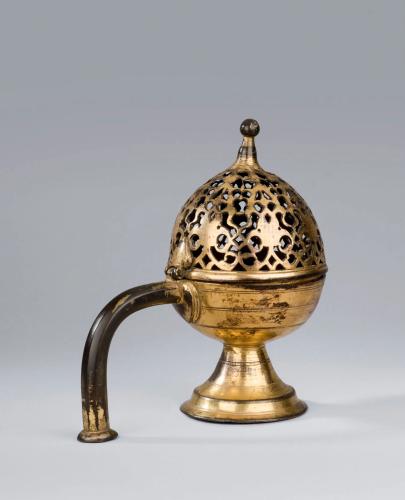

Price on application
This object is eligible for a Certificate of BADA Provenance
The BADA Standard
- Since 1918, BADA has been the leading association for the antiques and fine art trade
- Members are elected for their knowledge, integrity and quality of stock
- Our clients are protected by BADA’s code of conduct
- Our dealers’ membership is reviewed and renewed annually
- Bada.org is a non-profit site: clients deal directly with members and they pay no hidden fees
Rare Ottoman Tombak Zamzam Ewer (Zemzemlik).
Turkey.
18th century.
Height: 36.5 cm.
Of baluster form on a slightly splayed, bevelled foot, with a tall waisted neck and domed stopper with chain attached to body, the serpentine spout also with a small stopper and chain, the handle designed as a stylised split palmette, the body and lid engraved with stylised floral sprays.
The zamzam-ewer (zamzamiyyah) in hand is a remarkable and very rare example of tombak workmanship, displaying the introduction of Europeanized local decorative vocabulary to Ottoman metalwork in the 18th century. These were used for storing the holy zamzam water, brought home from Mecca by pilgrims. Similar pieces of Ottoman tombak art have been published in the exhibition catalogues Ab-i Hayat, 2010, p.151 and Sultan III. Selim Han, 2009, p.243.
Expertly gilded brass and copper wares are called “tombak”. The earliest examples of Ottoman metalworking are military equipment. Mamluk influence is apparent in 15th-century forms and styles of decoration. The style called “Classical Ottoman” takes shape during the early 16th century. Of special importance during the 16th and 17th centuries are harmoniously-proportioned candlesticks that have austerely-styled forms and are lacking in embellishment but contemporary with them are interesting examples of works whose surfaces are entirely covered with rumi-palmette compositions, braided friezes, delicate saz leaves, and floral motifs.
As for the present piece, not infrequently one comes across a tombak ewer that has such a extraordinary design. Military equipment such as helmets, chamfrons, and shields manufactured at the Topkapi Sarayi armory were stamped with a seal resembling the brand of the Kayl clan, of which the Ottomans were originally a member. Pots and pans used in the great kitchens of the Ottoman palace frequently contain inscriptions indicating who they belong to. Objects bequeathed to mosques and tombs also bear mostly tughra-like dedicatory inscriptions. Both in terms of its design and condition, the present piece is an outstanding example of Ottoman tombak art.
This magnificent tombak ewer illustrates the taste for the baroque and rococo in Turkey during the second half of the eighteenth century as influenced from European models. Ottoman interest in European art and culture flourished under the reign of Ahmed III (r.1703-30), with his promotion of embassies to Europe for scholarship dedicated to art, and the subsequent use of similar models in Istanbul. A particular testament to such development is visible in the sebil and çeşme of the Nuruosmaniye complex, completed by Osman III in 1755.
A very similar tombak ewer is illustrated in: Kayaoglu, I. Gundag, Tombak, Istanbul, 1992, p.26, described as: ‘Mecca-Water Ewer’. Tombak is the name of the application of gold with mercury-alloy on a metal surface, usually on silver, bronze, brass or copper. The application of gold with mercury-alloy on the surface of the work was a highly complicated and difficult process. Tombak arms and armour including shields, helmets, weapons, maces as well as belt buckles, flasks, spear finials, stirrups, bowls, ewers, basins, dishes, forks, knives, spoons, cups, waterpipe bottles, trays, clocks, lanterns were produced.
The BADA Standard
- Since 1918, BADA has been the leading association for the antiques and fine art trade
- Members are elected for their knowledge, integrity and quality of stock
- Our clients are protected by BADA’s code of conduct
- Our dealers’ membership is reviewed and renewed annually
- Bada.org is a non-profit site: clients deal directly with members and they pay no hidden fees




